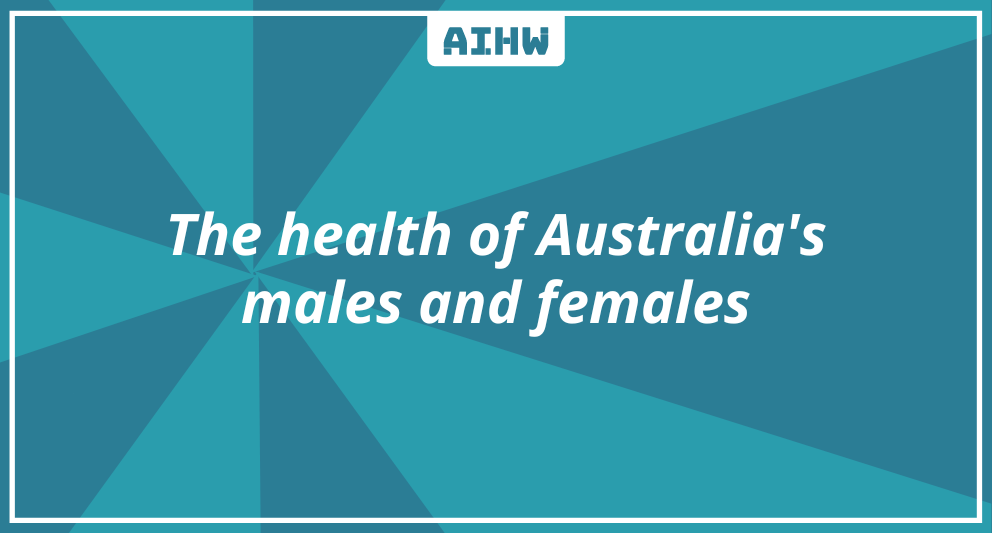The health of Australia's males and females
 CONTENT WARNING: This report contains information some readers may find distressing as it refers to data about suicide and self-harm.
CONTENT WARNING: This report contains information some readers may find distressing as it refers to data about suicide and self-harm.
Australian males and females are living longer, have improved access to health care and overall better quality of life than males and females alive in the early 20th century.
Over half of Australia’s males (58%) and females (55%) self-reported that their health is excellent or very good. But despite advances, ill health still occurs for both males and females.
Today the AIHW released 2 new reports, The health of Australia’s males and The health of Australia’s females, which outlines the latest information on male and female health with relation to health risk factors, the impact of COVID-19, chronic conditions, sexual and reproductive health, the leading causes of disease burden and how people access health care.
The unique anatomy of males and females coupled with individual health behaviours naturally presents varied health needs and outcomes between sexes*.
In 2022, most of the disease burden for males resulted from premature death (54%), while a smaller portion was attributed to living with ill health (46%). In contrast, females had a higher percentage of their disease burden from living with ill health (58%) than from premature death (42%).
Of all ill health and premature deaths experienced by Australians in 2022, males experienced a greater share than females from:
· injuries (70%)
· kidney and urinary diseases (62%)
· cardiovascular diseases (60%)
· endocrine disorders (including diabetes) (58%)
· cancer (56%).
In the same year, females experienced a greater share of ill health and premature deaths than males from:
· reproductive and maternal conditions (94%)
· blood and metabolic disorders (including iron deficiency anaemia) (59%)
· neurological conditions (including dementia) (57%)
· musculoskeletal conditions (56%)
· and respiratory disease (52%).
The leading risk factors contributing to preventable disease burden included tobacco, overweight (including obesity), all dietary risk, and alcohol and drug use. While both sexes experienced these factors, they were all more common among males than females.
The majority of Australian males and females are living with overweight and obesity - 75% of males and 60% of females.
Males are twice as likely to drink at risky levels than females - 27% of males consumed 10 or more standard drink per week, compared with 13% of females.
Males and females also access healthcare differently. Females are more likely to visit a general practitioner (GP). Almost 9 in 10 (88%) females visited a GP in the last 12 months, compared with about 8 in 10 males (79%).
However, by the time males and females are aged 65 and over, they are similarly likely to visit a general practitioner – 95% of males and 96% of females.
Additionally, females are more likely to seek support for mental health (21%) than males (12%) in 2021-22.
Read the full reports and explore the factsheet: How does the health of females and males compare?
*The use of ‘male’ and ‘female’ in these reports may relate to either sex or gender due to the nature of the data sources available. The AIHW is working towards including other categories when reporting by sex or gender. However, it is not always possible to do so as data on other categories may not be available. For more information, see AIHW data by sex and gender


